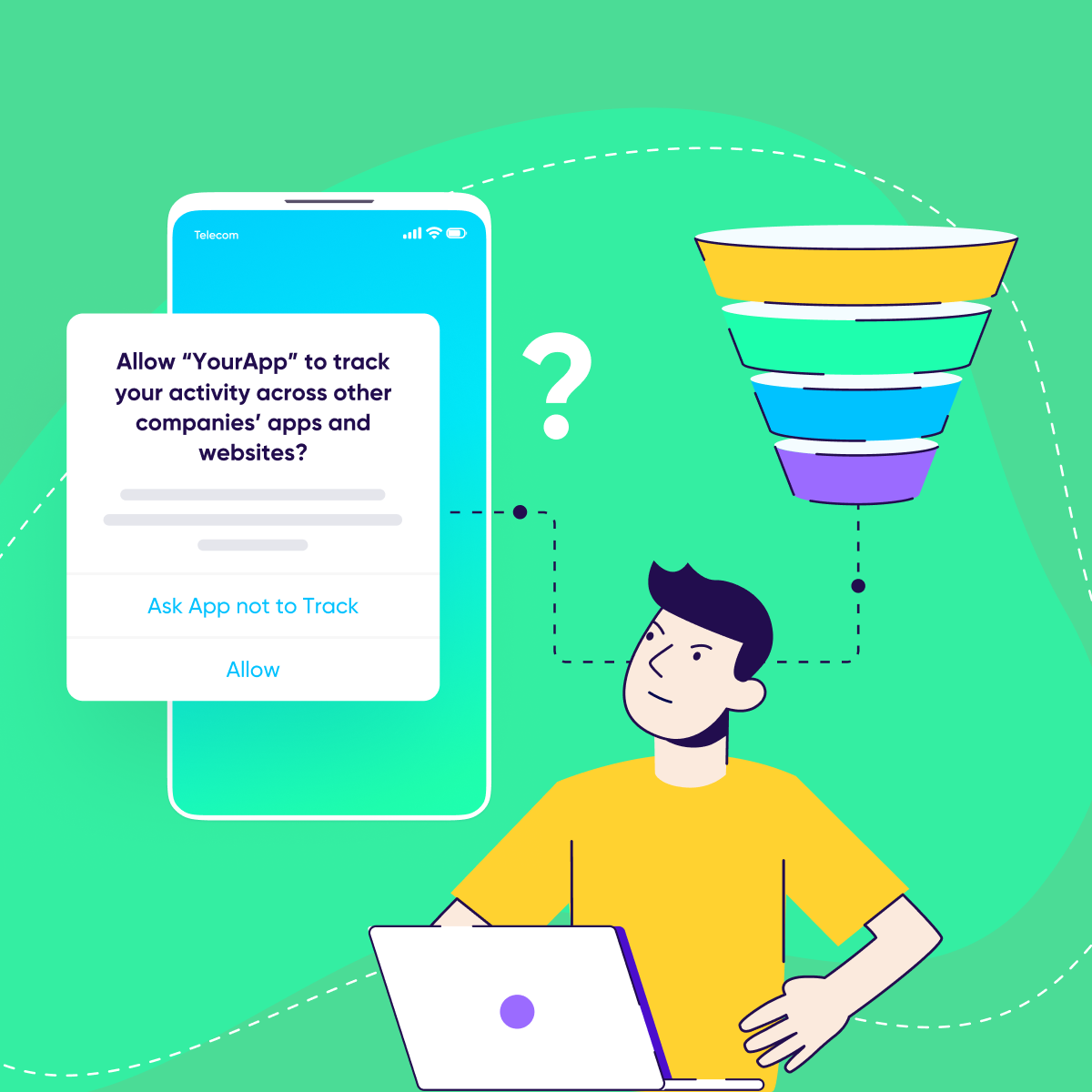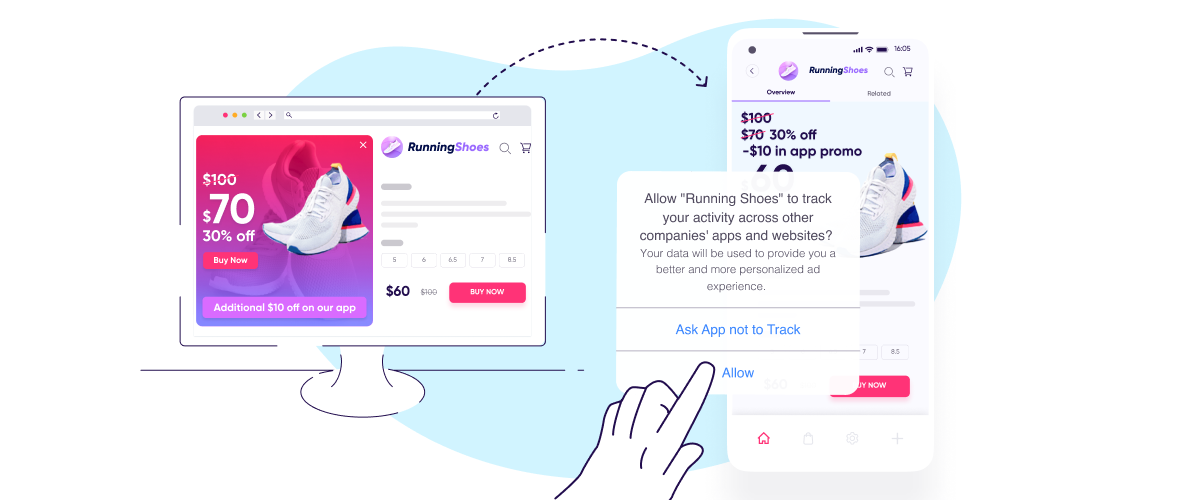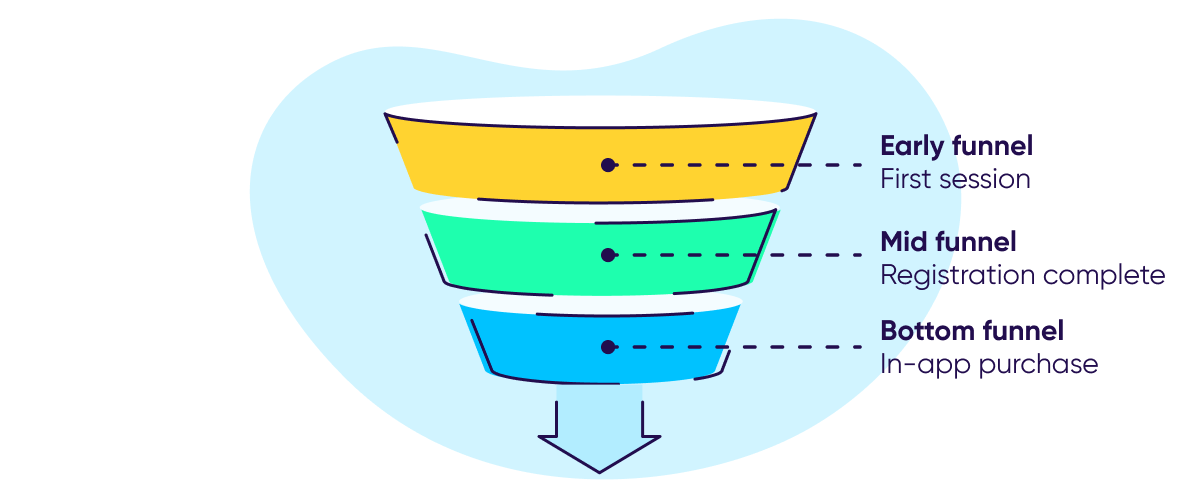
If and when to show the ATT prompt: What you need to consider

Timing is everything, as the saying goes – and when it comes to Apple’s AppTrackingTransparency (ATT) framework prompt it’s no different. Introduced as part of iOS 14, the prompt is a pop-up that asks users to give or deny access to their device identifier — the IDFA — as part of an opt-in mechanism. Apps control if, when, and to whom to show it.
Much has been written, said, and discussed about the how of showing the prompt: for example, which language to use, what can be customized, and how to use a pre-ATT prompt to improve opt-in rates.
Today we’re going to look at equally important questions: why and when to show the prompt.
But first let’s talk about the why.
Why you should show the prompt
There are several compelling reasons why you should show the prompt. First, it’s important to point out that, so far, the ATT opt-in rates have been higher than anticipated (see the latest ATT report), and a year after its enforcement, 80% of apps have implemented the ATT prompt.
Beyond the obvious reason that user level data and user level attribution enable marketers to drive the highest returns across a wide variety of activities (for more on this read our mobile attribution guide), higher IDFA rates have other benefits, namely:
- Apps/games that rely on ads to drive revenue: their cohort of consented users will be in high demand leading to increased CPM (cost per mille) rates.
- Having at least a part of your user base with full data granularity helps “extrapolate” results to compare with SKAdNetwork data and optimize accordingly.
- Sending part of the events at user level to networks allows them to better optimize the campaigns.

… and why you may prefer not to show the prompt
Why do apps decide not to show its users the ATT prompt?
Although user level attribution isn’t possible without dual ATT opt-in on both the advertiser and publisher sides, apps can still take advantage of aggregated attribution via SKAdNetwork – with a variety of effective solutions already in place to help them optimize their marketing without disrupting the user experience.
Indeed, some apps would rather not ask users for permission to ‘track’ them because they are concerned that it might lead to higher drop-off rates.
Other apps are in the privileged position of not needing to rely on marketing – so for them, showing the prompt may lead to unnecessary churn or disruption. However, for the vast majority of apps, marketing remains essential to stand out in a hyper competitive arena and drive profitable growth, and this is done best with user level data (even if the consented cohort is not the majority).
As the industry is going through significant changes, it may take a while until the dust settles. Sitting on the sidelines to better understand the full impact of ATT and how best to manage it seems like the main reason that some apps are waiting to implement the prompt.
Assuming you are showing the prompt, a major decision you’ll need to make is when to show it to your users. Here are a few considerations:
Trust goes a long way
Trust is key in any brand-consumer relationship, and the same principle applies to the ATT prompt.
Brand names are likely to have a significant advantage when it comes to opt-in rates, purely because of a level of user trust that smaller, less well-known developers are yet to acquire.
The same applies to active users of an existing app, who are already well-progressed with their user journey and are only now updating to iOS 14.5 and seeing the prompt for the first time. These users have a full understanding of the app’s value to them, whether the app itself is a known brand or otherwise.
While the prompt may be a confusing interruption (particularly in the early days of iOS 14.5, before users are accustomed to the prompt appearing in the majority of their apps), it’s unlikely to cause users to drop off.

The different stages in the user journey funnel
A user’s journey through an app can be broken down into various stages, from first launch, to the first session, to day 2, and beyond. In the context of iOS 14, “beyond” means not more than several days from install for reasons we’ll talk about ahead.
Each stage of the funnel carries its own considerations for when to display the ATT prompt:
- Early funnel – e.g. first launch of the app, first session, returning to the app on the same day, after a small amount of progress such as completing 3 levels in a Casual game.
- Mid funnel / after action – e.g. after creating an account or signing up to a subscription, after a set period of time with continued meaningful engagement (such as launching the app for 3 days in a row).
- Bottom funnel or later – purchase and later.

In the early stage of the user funnel, the ATT prompt will reach a large number of users and allow for early campaign optimization based on the cohort of consented users. However, it’s also possible that users might find an immediate request for consent to be intrusive and annoying, especially if they are unfamiliar with the app/brand at this point.
Our data shows that ATT prompt consent is highest when users launch the app for the first time, especially after a succession of in-app notifications shown to users upon launch. In fact, there is a 30% drop in opt-ins when the prompt is shown 2 hours later.
As we move down the funnel, users become more engaged, making them more likely to opt-in. At this stage, apps that show users their Terms of Service and Privacy Policy pop-ups (e.g. while subscribing or registering) could use that momentum to serve the ATT prompt to secure an opt-in.
However, it is important to stress that further down the funnel, the audience size is significantly reduced because of natural churn (day 7 retention rate is only around 10% on average). One may argue that these users are low quality, but signals of low quality are just as and even more important than good quality — which means marketing optimization becomes more limited.
By the later stages, the user will clearly understand the value the app has to them, and consider it worth their time (maybe their money, too) even among the tens or hundreds of other apps crowding their device and clamoring for similar amounts of attention. Based on that, opt-in rates should be at their highest later in the user journey.
30% of non-gaming apps showed higher opt-in rates 7 days after installation, which could be a result of apps sending push notifications for ATT opt-in to heavily engaged users.
Ultimately, there is no right or wrong, but rather a tradeoff between campaign optimization and audience size, and opt-in rates. It depends on what’s your goal, who is your audience, and are they familiar with your brand/app.
App type can determine prompt strategy
All apps and their audiences are different, meaning there’s no single magic solution that will work across the entire market when it comes to displaying the prompt.
Whether it’s a subscription app, a free-to-play app monetized with ads or a midcore game relying on IAPs, the app type has an effect on when may be best to show the prompt.
For example, a game that relies on ad revenue can show the prompt before they serve their first ad.
For a user signing up to a subscription service like Netflix, it would make sense to show the prompt immediately after signup, as users will already have had some preparation in the form of the signup process.
Key takeaways
- The earlier the prompt is shown, the greater an app’s optimization capabilities. Conversely, the later consent is given, the more limited your campaign optimization and the lower your reach due to industry-wide low retention rates.
- Apps see the highest opt-in rates when ATT prompt is shown on first launch. That said, every app is unique and there’s no substitute for thorough testing.
- Apps are seeing higher opt-in rates by sending push notifications to engaged users. 30% of non-gaming apps saw higher opt-in rates 7 days after installation by reengaging with high quality users.
- The later the prompt is shown, the higher the opt-in rate is likely to be (within several days of install). Once a user has an understanding of the value of the app to them, they are far more likely to be comfortable with opting in.
- Known brands have an advantage when it comes to gaining opt-in: trust. The same applies to active users of an existing app who are already invested in the app by the time they update to iOS 14.5 and see the prompt.
Finally, it’s worth remembering that this is uncharted territory for the iOS app market, and that there will be no single form of implementation that works across the entire ecosystem. That’s why testing, observing and optimizing will prove vital in the coming weeks and months.




